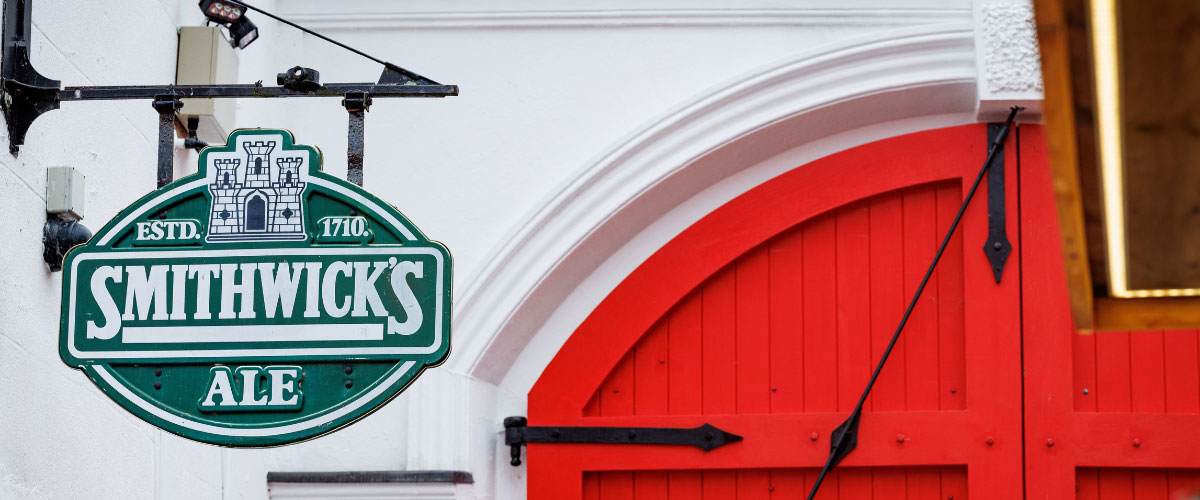The Final Draft > What Does the Name Kilkenny Mean?
What does “Kilkenny” Mean? The History Behind the Name

Kilkenny may be fondly dubbed The Medieval City but what is the true meaning behind the word ‘Kilkenny’? Long before John Smithwick was even born and it became the home of Smithwick’s, the city of Kilkenny can be traced back to the early 6th century. Discover how a small settlement became the place it is today.
‘Church of Cainneach’
St. Canice’s Cathedral is one of the must visit sites when one comes to Kilkenny. Not only is it an architectural delight, but its story stretches back to the beginning of the city’s history. Kilkenny as we know it began with a sixth century ecclesiastical foundation on the site of what is today St. Canice’s Cathedral. At the time there was a church of Canice and this is where the settlement drew its name – in honour of the priest who founded the monastic settlement. The name ‘Kilkenny’ comes directly from the Irish language where Cill Chainnigh translates to 'Church of Cainnech’ (or Canice).
St. Canice
Born in 525, St. Canice is the patron of the church, parish, and city of Kilkenny. Also known as Cainneach, Canisius and Kenneth (mostly in Scotland), the priest was born in Co. Derry to humble beginnings. Soon after his studies, he travelled to Scotland where he worked with Colmcille with whom he developed a close friendship. The two set up a number of churches before Canice returned to Ireland and founded the church in Kilkenny. Every year in autumn on the 11th of October, the feast day of St. Canice is celebrated.
The Medieval Capital
The ecclesiastical settlement was a stronghold of the lords of the Kingdom of Ossory – one of the ancient kingdoms in Ireland that comprised Kilkenny and Laois – along with its capital. After the Norman invasion of Ireland in the early 12th century, walls were built around the town (which are still visible to this day) along with Kilkenny Castle to protect it from raiders and attacks. The town became the capital of the Norman colony in Ireland. The castle, built on orders from the famous Strongbow in 1173, became the new focal point of the town. Until the late 12th century, it served as the capital of Ireland. At a later point in time, it reprised this role. During 1642 until 1649 Kilkenny became the capital of Confederate Ireland until the island was invaded by Oliver Cromwell.
Merchant Town
Since its earliest incarnation, Kilkenny has always been a thriving trading town. The remains of the Kilkenny walls capture just how important a settlement this was to the Norman invaders who sought to protect it at all costs. The way Kilkenny developed and prospered through the centuries had much to do with its skilled merchants and tradespeople. From Rothe House – the famous townhouse of renowned merchant John Rothe – to the Smithwick’s Experience – the historic home of Smithwick’s and over 300 years of brewing history – the city has been created and recreated over the years by the people and innovators who have called it home.
RECOMMENDED READS
Top Things to Do in Kilkenny Along the Medieval Mile
Along Kilkenny’s Medieval Mile, beginning at Kilkenny Castle, descending through the city and ending at St Canice’s Cathedral & Round Tower, you’ll find a host of historical and cultural attractions and exciting things to do that will suit everyone’s tastes.
Group Activities in Kilkenny
The vibrant town of Kilkenny, steeped in rich history, stunning landscapes, and a lively arts scene, is an ideal destination for groups seeking an array of activities. This comprehensive Kilkenny group travel guide is designed to provide you with the best group activities in Kilkenny, whether you're interested in team building, sightseeing tours, or a fun-filled weekend in Kilkenny.
Ideas for Couples Visiting Kilkenny
Seeking a unique romantic getaway? Kilkenny is calling you! With its captivating history, thriving food scene, and stunning landscapes, Kilkenny is a haven for couples. Let's dive into the exciting world of fun activities and romantic experiences Kilkenny has to offer!